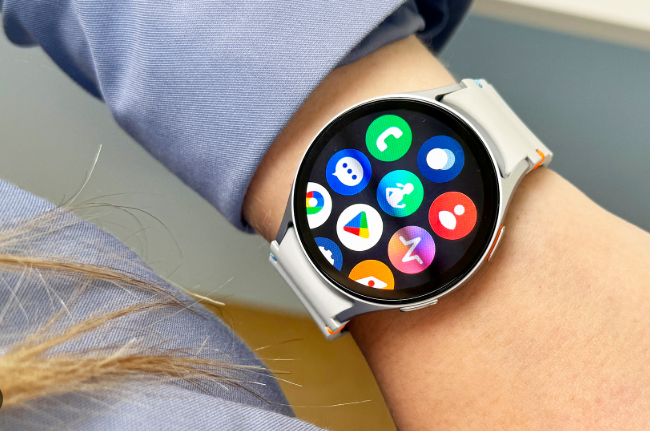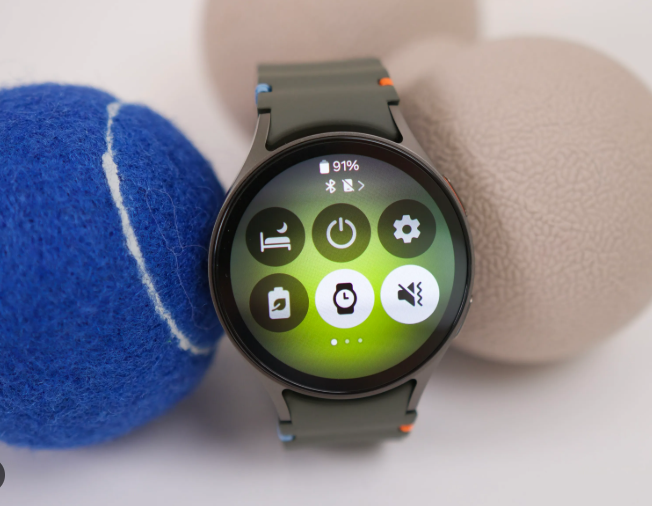As smartwatches become essential tools for fitness tracking, notifications, and communication, a common question arises: Is a smartwatch safe for health? With features like heart rate monitoring, sleep tracking, and even call functionality, these devices offer undeniable convenience. However, concerns about radiation, skin irritation, and long-term health effects persist. This comprehensive guide addresses whether a smartwatch is safe for health, covering potential risks, safety tips, and best practices for setup, maintenance, and troubleshooting. Whether you’re using a portable smartwatch for yourself or your kids, this article will help you make informed decisions. Learn more about wearable safety at smartwatchus.com.
Understanding Smartwatch Health Concerns
To determine if a smartwatch is safe for health, it’s important to examine the primary concerns: radiation exposure, skin irritation, and psychological impacts. Let’s break these down.
Radiation and Electromagnetic Fields (EMF)
Smartwatches use Bluetooth, Wi-Fi, and sometimes cellular (LTE) connections, which emit non-ionizing electromagnetic fields (EMF). Non-ionizing radiation, unlike ionizing radiation (e.g., X-rays), lacks the energy to break DNA, making it generally safe. Studies from reputable health organizations, like the World Health Organization, suggest that low-level EMF from devices like smartwatches poses no conclusive health risks. For example, specific absorption rate (SAR) levels in smartwatches like the Apple Watch (0.27 W/kg) are well below the U.S. Federal Communications Commission’s limit of 1.6 W/kg. However, long-term effects are still under study, and some users prefer to minimize exposure.
Skin Irritation and Allergies
Wearing a smartwatch for extended periods can cause skin irritation, especially if the device or strap traps sweat, dirt, or bacteria. Materials like nickel in metal straps or certain chemicals in silicone straps may trigger allergic reactions in sensitive individuals. For instance, fluoroelastomer straps in some smartwatches contain PFAS, which may cause minor skin reactions in rare cases.
Psychological and Behavioral Impacts
Overreliance on smartwatches for notifications or fitness goals can lead to stress or obsessive behavior, particularly in children or teens. Constant alerts may disrupt sleep or increase anxiety, while fitness tracking might encourage unhealthy fixation on metrics like steps or calories.
Overall, a smartwatch is safe for health when used responsibly, but precautions can further reduce risks.

Smartwatch Safety Tips for Health
To ensure a smartwatch is safe for health, follow these smartwatch safety tips:
- Limit Wear Time: Remove the smartwatch periodically, especially at night, to reduce EMF exposure and prevent skin irritation.
- Choose Hypoallergenic Straps: Opt for silicone, leather, or nylon straps over metal if you have sensitive skin. Eco-friendly straps, like those on the Solios Solar, are often free of harmful chemicals.
- Manage Notifications: Disable non-essential alerts to reduce stress and improve sleep quality.
- Use Airplane Mode: Activate airplane mode when not using connectivity features to minimize EMF emissions, especially for kids’ smartwatches.
- Monitor Kids’ Usage: For children using devices like the COSMO JrTrack 4, enable parental controls to limit screen time and ensure safe communication.
These smartwatch tips promote both physical and mental well-being while using your device.
How to Connect a Smartwatch Safely
Proper smartwatch setup ensures safe and effective use. Here’s a guide on how to connect a smartwatch to a phone while prioritizing health:
- Download the Companion App: Install apps like Garmin Connect, Apple Watch, or Zepp from trusted sources (App Store or Google Play).
- Enable Bluetooth Sparingly: Turn on Bluetooth only when syncing or using call features to reduce EMF exposure.
- Secure Data: Grant minimal permissions (e.g., avoid unnecessary access to health data) to protect privacy, which can reduce stress about data misuse.
- Test Features Safely: Verify call or tracking functions in a well-ventilated area to avoid prolonged skin contact during initial setup.
Check compatibility with your phone’s OS to avoid connectivity issues. For more setup tips, visit smartwatchus.com.
How to Use a Smartwatch Safely
Learning how to use a smartwatch with health in mind is key to ensuring a smartwatch is safe for health. Follow these practices:
- Limit Call Time: For smartwatches with call functions, like the Amazfit Bip 6, keep calls short to reduce EMF exposure and wrist strain.
- Balance Fitness Tracking: Use features like heart rate or sleep tracking (e.g., Fitbit Charge 6) to monitor health without obsessing over metrics.
- Avoid Overuse: Take breaks from wearing the watch, especially during sleep, to give your skin a rest.
- Use Eco-Friendly Models: Opt for sustainable smartwatches like the Garmin Instinct 2 Solar, which uses recycled materials and solar power to minimize environmental health impacts.
By using your portable smartwatch mindfully, you can enjoy its benefits safely.
Smartwatch Maintenance and Cleaning for Health
Proper smartwatch maintenance and smartwatch cleaning are critical to ensuring a smartwatch is safe for health. Follow these steps:
- Clean Regularly: Wipe the watch and strap with a soft, damp cloth to remove sweat, dirt, or bacteria. Use mild soap for straps but avoid harsh chemicals.
- Check for Water Damage: Most smartwatches have 5ATM water resistance but should not be exposed to hot water or prolonged submersion, as this can degrade materials and affect skin safety.
- Replace Straps: Swap out worn or irritating straps for hypoallergenic options, like silicone or vegan leather, to prevent rashes.
- Store Properly: Keep your portable smartwatch in a cool, dry place to avoid microbial growth or component damage.
Regular smartwatch cleaning prevents health issues like skin infections, especially for active users or kids.
Smartwatch Troubleshooting: Addressing Health-Related Issues
Some health concerns arise from technical issues. Here’s how to handle common smartwatch troubleshooting problems that impact safety:
- Inaccurate Health Data: If heart rate or sleep tracking is off (e.g., 5–10% variance in budget models like the Xiaomi Redmi Watch 5 Active), recalibrate sensors or update firmware.
- Connection Issues: Frequent Bluetooth disconnections can lead to overuse while troubleshooting. Restart both devices or re-pair to stabilize.
- Battery Overheating: If the watch feels warm during charging, use a certified charger and avoid charging on soft surfaces like beds to prevent burns.
- App Overload: If notifications overwhelm you, disable non-essential apps in the companion app to reduce stress.
For more smartwatch troubleshooting tips, check out maintenance tips.

Special Considerations for Kids’ Smartwatches
For parents asking, “Is a smartwatch safe for health for kids?” additional precautions apply:
- Limit EMF Exposure: Use models like the COSMO JrTrack 4 with airplane mode or low-power settings to reduce radiation concerns for young users.
- Choose Safe Materials: Opt for hypoallergenic straps to avoid irritation on sensitive skin. Brands like Garmin (Vivofit Jr. 3) use silicone straps.
- Monitor Usage: Set screen time limits via parental controls to prevent overuse, which can affect sleep or focus.
- Educate Kids: Teach children to remove the watch during sleep or if discomfort occurs.
Kids’ smartwatches can be safe with proper oversight, making them a great tool for communication and tracking.
Choosing the Best Smartwatch for Health Safety
To ensure a smartwatch is safe for health, consider these factors when choosing a device:
- Low-EMF Options: Select models with minimal connectivity needs, like the Garmin Vivofit Jr. 3, which uses a long-lasting battery and no Bluetooth for basic tracking.
- Material Safety: Choose eco-friendly or hypoallergenic materials, such as those in the Solios Solar or Apple Watch SE with FineWoven bands.
- Health Features: Prioritize accurate sensors for heart rate or sleep tracking, as seen in the Fitbit Charge 6 or Garmin Instinct 2 Solar.
- Durability: Look for 5ATM water resistance and replaceable straps to ensure long-term use without frequent replacements.
The best smartwatch guide recommends researching SAR ratings and material certifications for added peace of mind.
Conclusion: Is a Smartwatch Safe for Health?
In 2025, a smartwatch is safe for health when used responsibly and maintained properly. Low-level EMF emissions pose no significant risk based on current research, while proper smartwatch cleaning and smartwatch maintenance prevent skin issues. By following smartwatch safety practices, such as limiting wear time, choosing hypoallergenic materials, and managing notifications, you can enjoy the benefits of a portable smartwatch without compromising well-being. For kids, parental controls and safe materials enhance safety further. Whether you’re tracking fitness or making calls, a smartwatch is safe for health with the right precautions. Explore more health-focused wearable tips at smartwatchus.com.